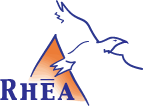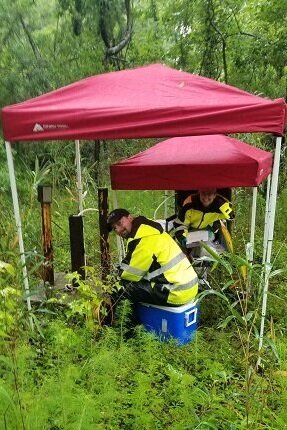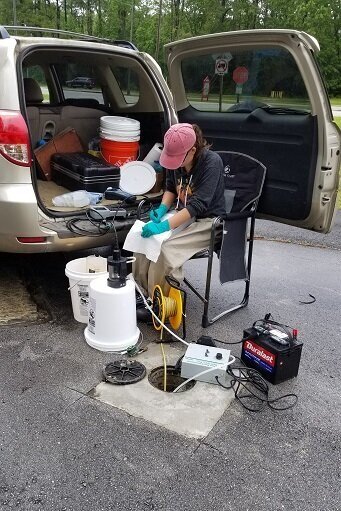
Rhea has performed long term monitoring activities at Marine Corps Air Station Cherry Point Operable Units for more than a decade and closely tracks contaminant trends through a variety of statistical analyses.
Long Term Monitoring at Select Operable Units
Rhea was contracted by the Department of Navy, Naval Facilities Engineering Command (NAVFAC) Mid-Atlantic to conduct Long Term Monitoring (LTM) monitoring activities at Operable Units (OU) 2, 4, and 14, located at Marine Corps Air Station (MCAS) Cherry Point, North Carolina. In December 1994, MCAS Cherry Point was placed on USEPA’s National Priorities List (NPL), established under the Comprehensive Environmental Response, Compensation, and Liability Act (CERCLA). The Records of Decision (ROD) for each of the OUs were developed and specified Land Use Controls (LUCs) with Monitored Natural Attenuation (MNA) as the selected remedy for groundwater contamination at the site. The LTM activities conducted by Rhea provide evidence to verify the effectiveness of these naturally-occurring processes to reduce contaminant concentrations within groundwater over time.
This LTM project is complicated due to the presence of multiple contaminants of concern at each site, coupled with these OUs being located in secure areas which include mission-critical locations in the west-central portion of the MCAS Cherry Point flight line complex. The hazardous nature of working adjacent to an active flight-line necessitates additional precautions. Access to the site is strictly controlled and must be coordinated with the flight line tower daily. Rhea field personnel take a training class to obtain a flight-line drivers permit in order to drive on the site.
The three OUs managed by Rhea each contain different site-specific contaminants of concern and require a variety of analyte-specific analyses. Through the preparation and optimization of the Sampling and Analysis Plan (SAP), Rhea is able to effectively track these analytes and provide cost savings to the Navy by only analyzing those specific contaminants of concern as opposed to an entire suite of generic analyses. Once the SAP is reviewed, compared to the previous analytical data, and updated accordingly, Rhea performs annual LTM groundwater sampling at each of the OUs. Quality assurance (QA) and quality control (QC) samples including trip blanks, field blanks, equipment blanks, duplicate samples, and matrix spike/matrix spike duplicate (MS/MSD) samples are also collected during LTM sampling activities.
Concurrently performed with the LTM groundwater sampling, Rhea performs a maintenance event at each OU. This event entails performing maintenance of the various site controls, clearing of the well field and fence line, and performing any required maintenance to the monitoring wells as needed, i.e. repairs to the protective bollards or concrete pads.
Following the LTM groundwater sampling and maintenance event, Rhea reviews the laboratory analytical results and prepares Annual LTM Reports for each site. However, prior to the preparation of these reports, a thorough data validation effort is performed to verify that the data is sound in terms of both its collection in the field and analysis by the laboratory.
The LTM report presents the current environmental conditions at the OU, including evaluations of groundwater flow directions and gradients (potentiometric surface maps and groundwater elevation data); comparison of the current LTM data to baseline, prior year, and groundwater protection standard (GPS) values; an updated evaluation of the conceptual site model (CSM); plume migration figures; and an overall discussion of the monitoring program with conclusions and recommendations. Rhea’s groundwater sampling data analysis includes a complete statistical analysis for data trends. Specifically, the Mann-Kendall test for analyzing trends in data of time was employed using the Monitoring and Remediation Optimization Systems (MAROS) software package. The Mann-Kendall test determines the contaminant trends (increasing, decreasing, stable) and the confidence in each trend. As many contaminants of concern follow a predictable path of biodegradation to daughter products, tracking the contaminant concentration trends is useful in evaluating the progress toward meeting the Remedial Action Objectives (RAOs) set forth in the RODs, as well as to monitor progress toward attainment of specific remedial goals (RGs).
In addition to determining the contaminant concentration trends, Rhea evaluates the site conditions, natural attenuation parameters and at some site, DHC functional genes to determine if conditions at the site are favorable for biodegradation.
Rhea’s OU project manager prepares annual updates and attends MCAS Cherry Point Tier I Partnering Team meetings to present the results of the LTM to project stakeholders, which includes MCAS Cherry Point, NAVFAC, NCDEQ, and USEPA personnel.
Services: Field Monitoring + Management
Industries: Federal Government






